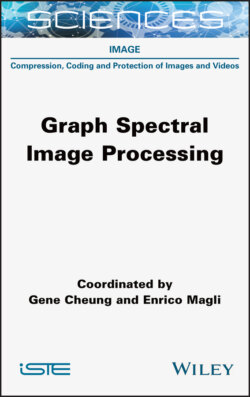Читать книгу Graph Spectral Image Processing - Gene Cheung - Страница 21
1.2. Review: filtering of time-domain signals
ОглавлениеWe start by reviewing the filtering in discrete-time linear time-invariant (LTI) systems, which has been extensively studied in literature. Suppose that a one-dimensional discrete-time signal xn is obtained by sampling its continuous-time counterpart x(t), with a fixed sampling period T, i.e. xn = x(nT). A two-dimensional image signal can be similarly obtained by performing sampling in both the horizontal and vertical directions. In this case, the spatial sampling period usually corresponds to the spacing between an array of photosensors.
Suppose that an impulse response of a filter hn is given a priori. The discrete-time filtered signal yn in the LTI system is calculated from xn and hn by convolution as follows:
This equation is based on the shift of the signal or impulse response. In LTI systems, we (implicitly) assume that the shift of a discrete-time signal is well defined, i.e. xn−k is unique and time invariant. Therefore, equation [1.1] is equivalently represented as
where x := [...,x−1,x0,x1,... ]T and y := [...,y−1,y0,y1,... ]T. 1
In equation [1.2], the impulse response hk is invariant for n, i.e. the same filter is used for different values of n. Instead, we can use different filters for different values of n to yield yn, whose impulse response hk[n] is often defined in a signal-dependent manner, i.e. hk[n] hk[m] for m n. It is formulated as
and its matrix form representation is
[1.4]
Famous image processing filters in this category include the bilateral filter (Tomasi and Manduchi 1998; Barash 2002; Durand and Dorsey 2002; Fleishman et al. 2003), anisotropic diffusion (Weickert 1998; Desbrun et al. 1999), adaptive directional wavelets (Chang and Girod 2007; Ding et al. 2007; Tanaka et al. 2010) and their variants.
It is well known that convolution in the time domain equation [1.1] has an equivalent expression in the frequency (i.e. Fourier) domain as follows:
where
[1.6]
Here, is the discrete-time Fourier transform (DTFT) of xn. We utilize the fact that convolution in the time domain is identical to multiplication in the frequency domain. Note that the fixed filter has a corresponding fixed frequency response, and thus, we can intuitively understand the filter characteristics from the frequency response. In contrast, the frequency response of a signal-dependent filter is not always clear in general. Fortunately, this drawback can be partially solved with a graph spectral domain perspective, which is described further.
